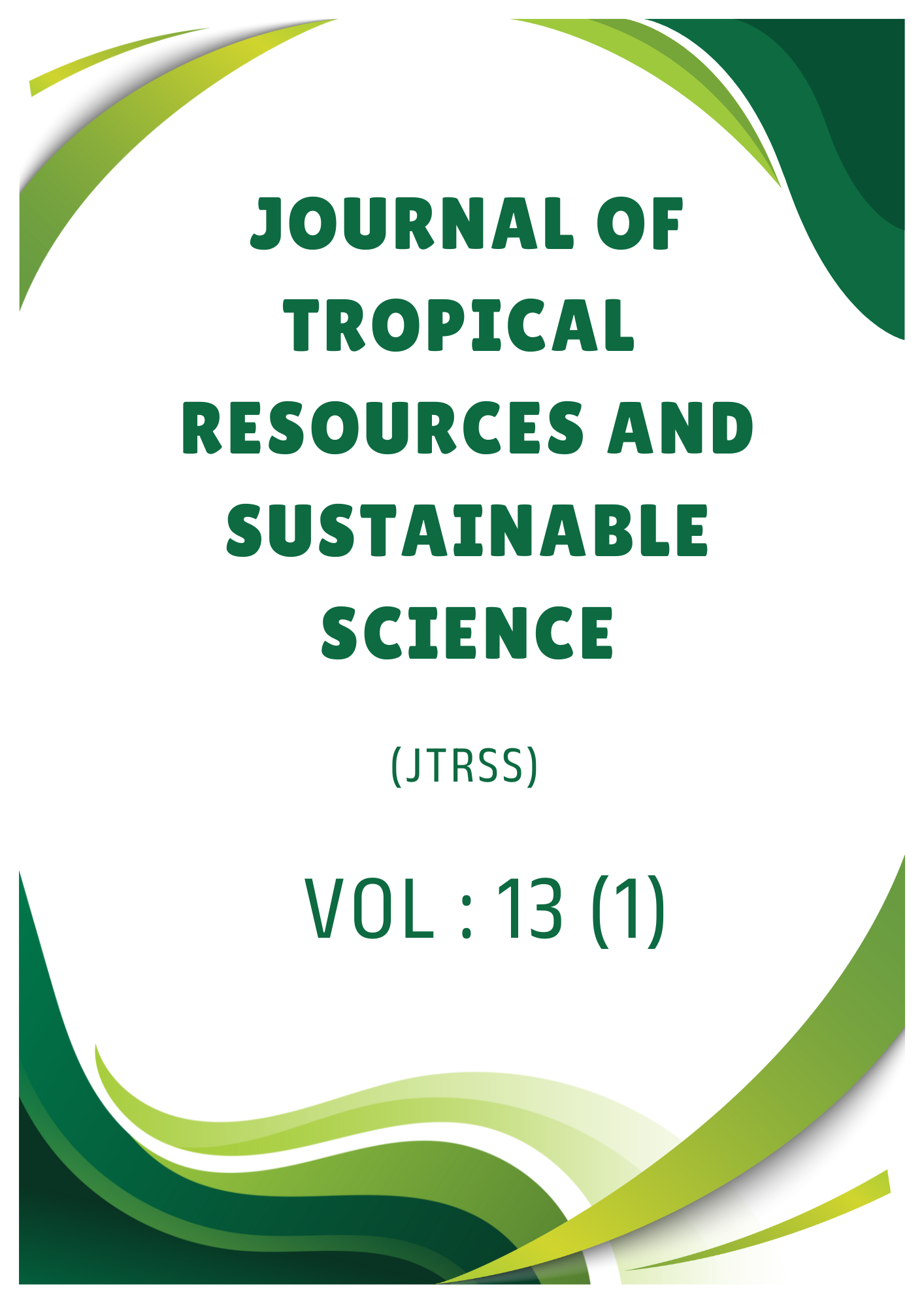Mango Pulp Weevils (Coleoptera: Curculionidae) Sternochetus frigidus Interaction with Mango Volatile Compound
DOI:
https://doi.org/10.47253/jtrss.v13i1.1447Keywords:
off-season, flowering season, pests, pollinatorsAbstract
Sternochetus frigidus, commonly known as the mango pulp weevil, threatens mango trees. The current study evaluated the infestation of this weevil and its influence by the volatile compound of the mango species: Mangifera indica (mangga epal) and M. odorata (kuinin). The length from the mango skin to the location of the weevil found was measured. The mango peel and pulp were extracted for volatile compound determination using gas chromotography-mass spectrometry (GC-MS) headspace concentration methods. Results demonstrated a higher number of larvae, pupae, and adults of S. frigidus on M. odorata (100%) than M. indica (70%). The higher infestation level was demonstrated by M. odorata, which had higher amine and monoterpene hydrocarbon concentrations. The study found only M. indica contained phenolandrene and copaene compounds, which were not found in M. odorata. Mangifera odorata contained linalool, limonene, and terpinene which was not found in M. indica. These compounds can be good pheromone-trapping lures for controlling mango pulp weevils.







